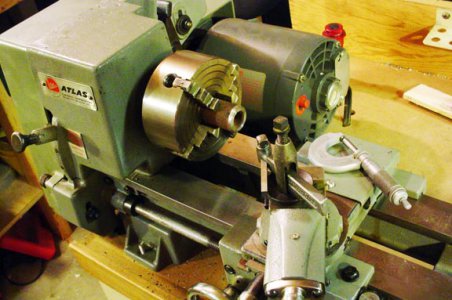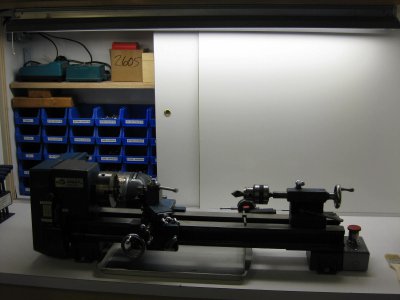- Joined
- Dec 27, 2014
- Messages
- 4,093
I found this lathe through the (what have you seen on Craigslist) forum. It was advertised as an Atlas by Clausing 6 x 24 lathe, there were four or five pictures and a price. I discussed it with my 'financial adviser' and she said Go Ahead If You Want it. The least I could do was go look at it. After a 70 minute drive I saw it, smaller than it looked in the pictures, but that's not a problem, it was a whole lot bigger than the HF 5 by 12 I was thinking about. Long story short the seller was a really nice guy, has a whole shop full of lathes and mills both in operation and under construction. (about a 3 car heated separate building) It came on a fabricated wood and metal base, we removed the lathe from the base and put them both in my Subaru. I got home (70 minutes later) and got the lathe into my shop. The seller had put a 1/2 piece of steel in the Jacobs chuck on the end of the spindle and made some chips to prove that it worked. In reality those were probably the first chips the lathe had made. I examined the ways under a good light and found one minor scratch about 10 inches long on the back way, an oil stain on the front and no other evidence of use. I'm in the process now of dis-assembly and cleaning so I can be sure all the original oil and grease has been replaced with new. Its the model with the cast iron head, not the Zamak which Clausing called die cast aluminum. How to tell them apart, the aluminum headed lathes are painted blue, the cast iron gray. The four jaw chuck that came with it has never been mounted, there's still cosmosline on the mounting threads.
I'm looking forward to some very satisfactory work from this lathe.
I'm looking forward to some very satisfactory work from this lathe.
Last edited:


